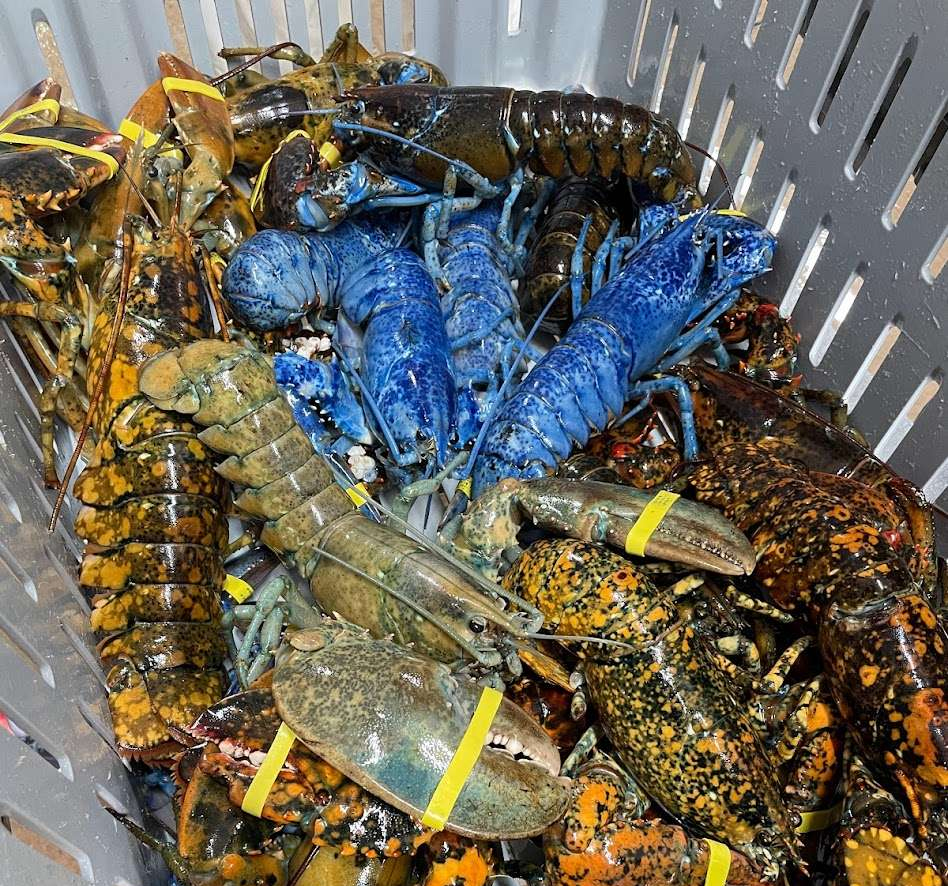Most seafood enthusiasts will be familiar with the appearance of their local lobsters, but some may be surprised to learn that the prized crustaceans come in remarkably wide variety of colours – with lobsters of the same species often expressing very different shades.
People living on the northeastern seaboard of North America – a region famed for its lobsters – will probably have encountered Homarus americanus at some stage and this species tends to have green or brown tops and mottled orange undersides.
Many of these are exported, with Europe one of the main markets, but they are often shipped pre-cooked and frozen.
However, on this side of the Atlantic the native species is the European lobster (Homarus gammarus). If you’re lucky enough to catch one, or see them alive in tanks at fishmongers, they are typically a rich navy blue on top and, similar to their American cousins, have a mottled yellowy-orange underside. However, specimens of a wide variety of colours also occur.
What determines the colour of a crustacean?
European lobsters have a range of colour variations, including shades of blue, green and brown. There are even rare individuals whose shells are predominantly orange or red. The genetic makeup of a lobster plays a significant role in determining the colour of their shells. Variations in specific genes can alter the pigmentation in their shells.
Although the blue colouration is most common in European lobsters, other species, including American lobsters, can also have this appearance. In the case of non-European lobsters, the blue can be the result of a genetic mutation that causes an overproduction or accumulation of astaxanthin, a red pigment common to most crustaceans, in their shells. This overabundance of astaxanthin can result in a blue colouration because the red pigment interacts with the lobster’s natural pigment, resulting in a bluish appearance.
Blue pigmentation is an inherited trait, so blue lobsters are more likely to be found in areas where there is a higher prevalence of this genetic mutation. However, outside of European waters, even in areas with a higher frequency of blue lobsters, they are still relatively uncommon compared to the more typical brown or green lobsters. This may in part be due to the fact that the brightness of their shells rarely matches their surroundings. With less effective camouflage, they are potentially more vulnerable to a range of predators, including otters, seals and – when juveniles – a wide range of fish and crustacean species.
The rarity of blue American lobsters makes them particularly valuable, both economically and ecologically. Conservationists can regard them as a striking example of biodiversity And, even in regions where dark blue lobsters are common, the occasional much brighter specimen will be captured, often generating great interest in popular media and acting as a reminder of the wonders and the mystery of marine life.
From an economic standpoint, in areas where consumers are less familiar with the blue lobsters, they can fetch premium prices, although – unfortunately – their electric blue shells will turn orangey-red when cooked, rendering them largely indistinguishable from their conventionally coloured relatives.













Comments